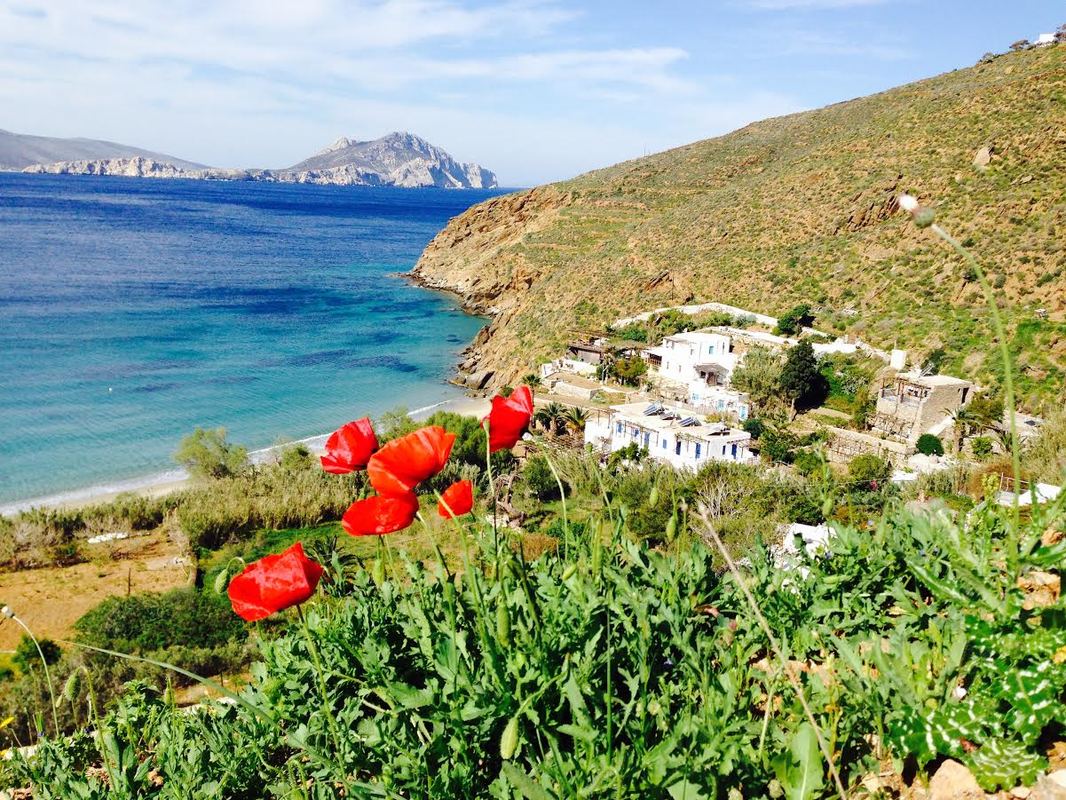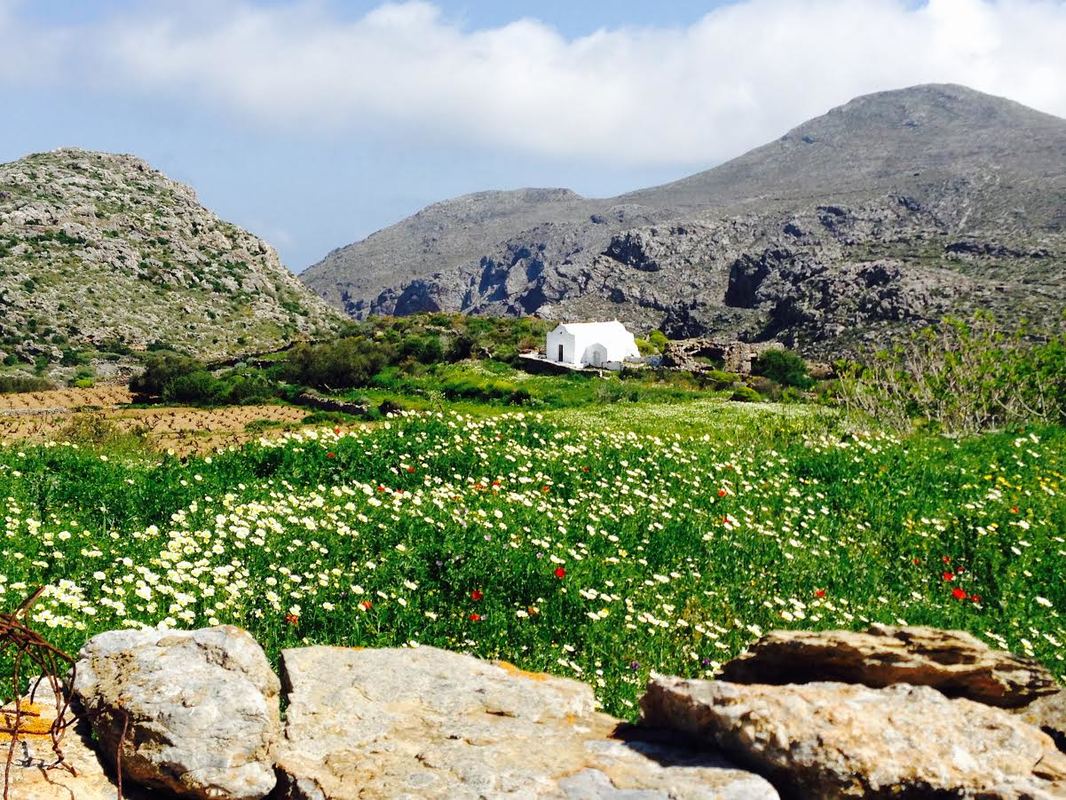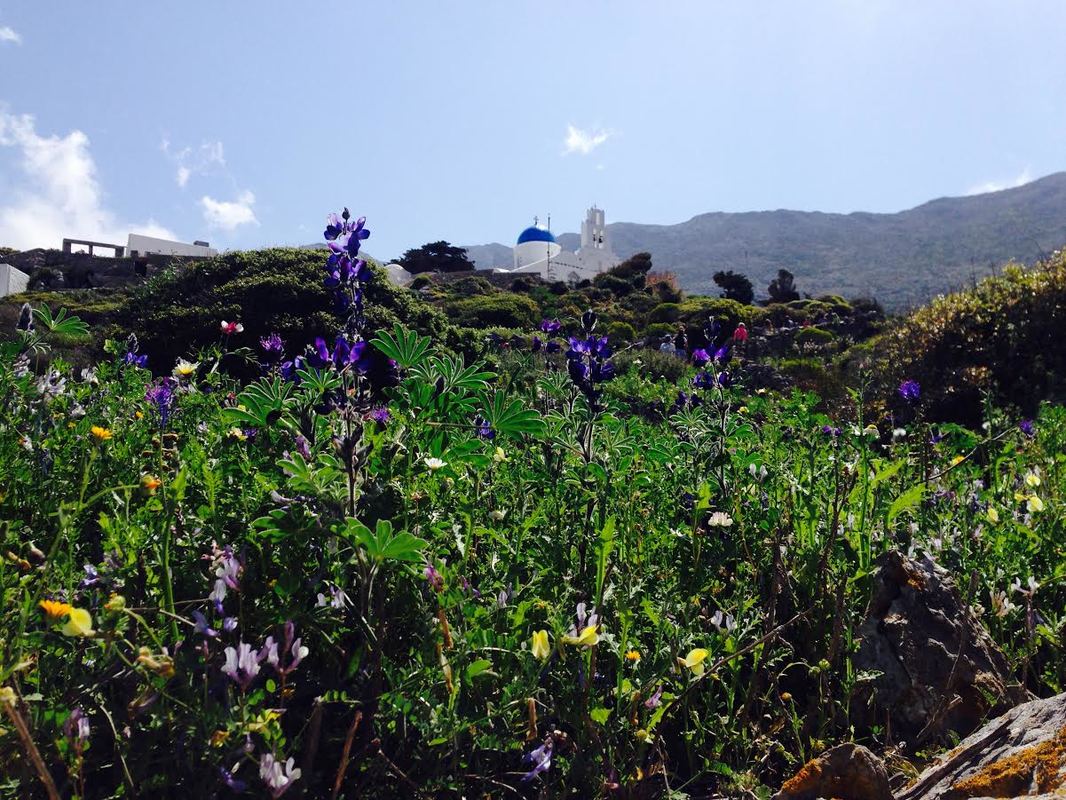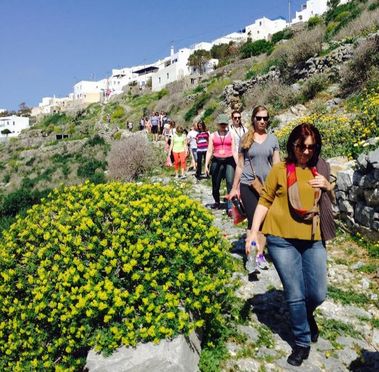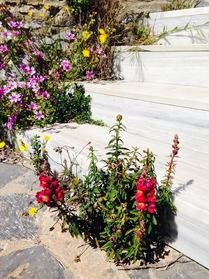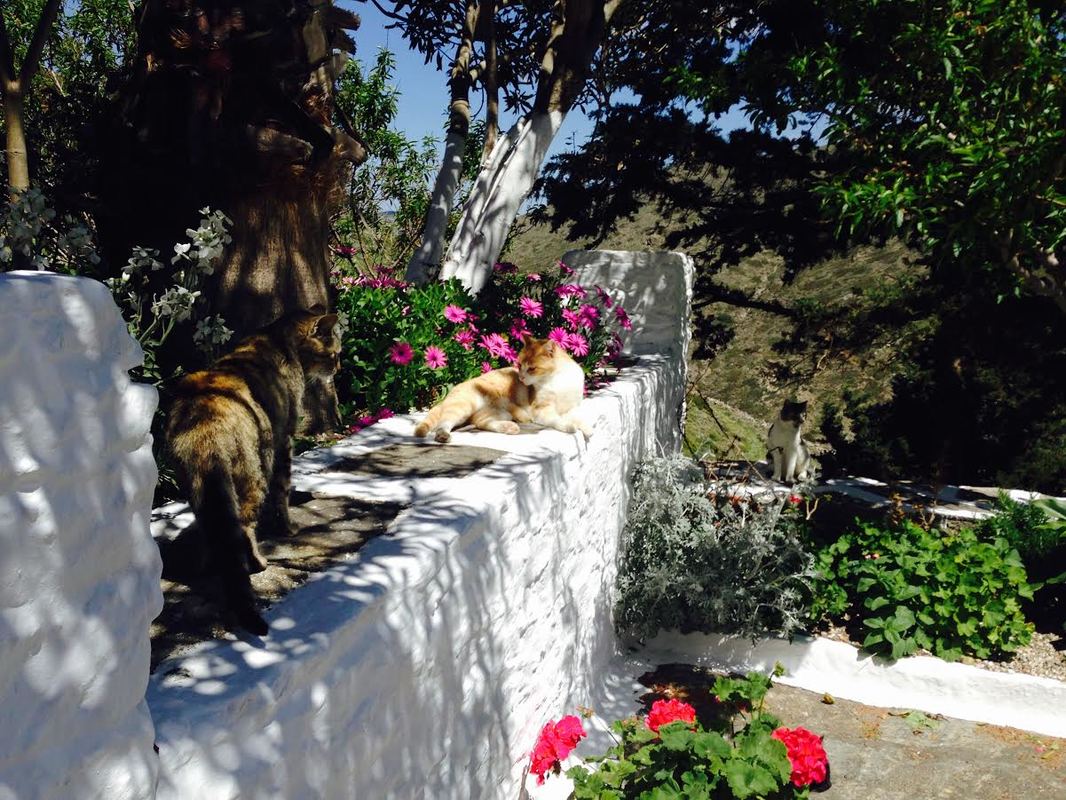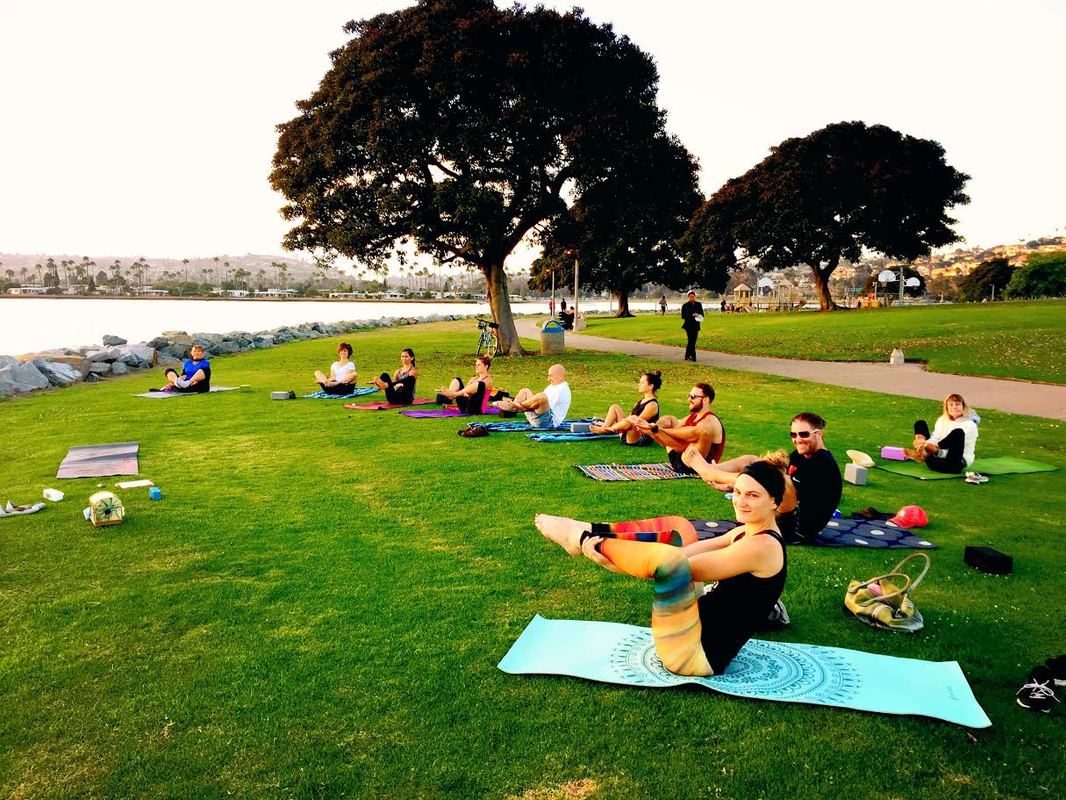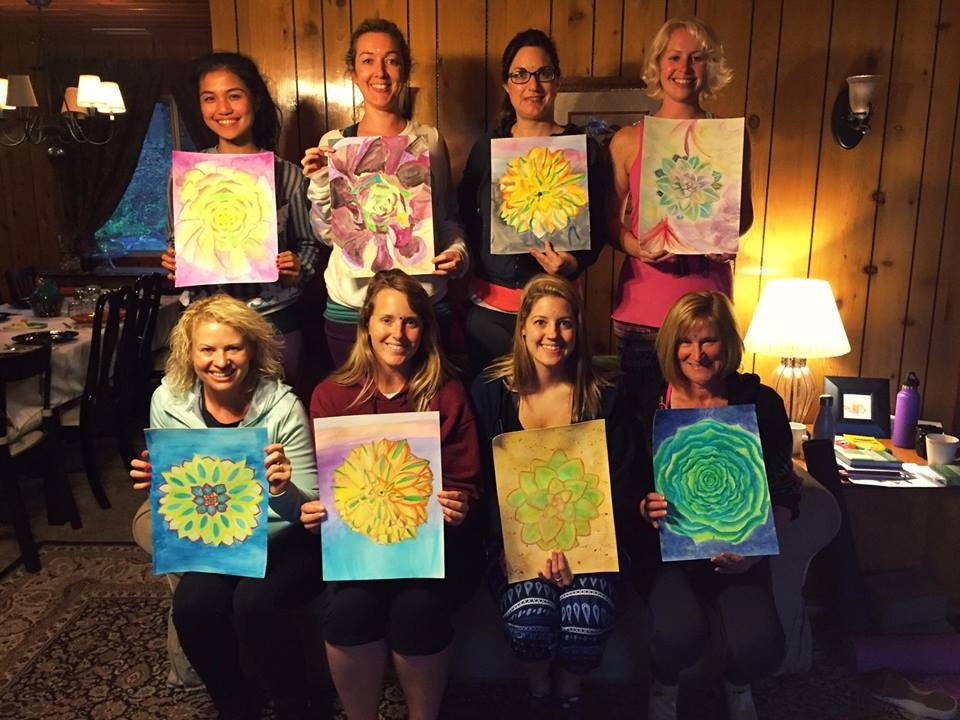As we promenade from the villages of Tholaria to Lagada, on the bay of Aegiali, our path is lined with a spectacular array of color. Yellow, red, purple, pink, and white patterns sprinkle throughout the green hillsides. I stop and kneel down to admire the variety of shapes, shades, textures, and scents of these wildflowers that chose to shine for us in this very moment.
In spring, the Greek island of Amorgos is covered with wild flowers like daisies, poppies, chrysanthemums, traveller's joys (Clematis viticella), chamomiles, hollyhocks, and Persian cyclamens as this island is known for its wide variations of herbs and plants. It is believed that Amorgos received its name from the flower “Amorgos”. This flower was used during antiquity to produce gossamer tunic which was colored deeply red.
The landscape of Amorgos is unspoiled and so dominated by mountains that in the old days, there was no road connecting east and west and each village had its own currency. This place is kept very natural (secluded with no airport and limited accommodations). There are six hundred species of flora that grow here. Many of these herbs, like sage and rosemary, are used to produce essential oils, through distilling processes, for beverages, medicine, and cosmetics.
In fact, the term, Wild Flower, can refer to the flowering plant as a whole, even when not in bloom, and not just the flower. For this reason, we can be reminded of the whole circle of life, growth, and involvement of the Elements- starting as a seed that has landed in soil (Earth), then being rained on (Water), sprouts above the soil (Air), and gains energy from the sun (Fire), after opening wide in the form of a flower (Space), flows back into the soil and starts the process, slowly throughout the seasons.
The landscape of Amorgos is unspoiled and so dominated by mountains that in the old days, there was no road connecting east and west and each village had its own currency. This place is kept very natural (secluded with no airport and limited accommodations). There are six hundred species of flora that grow here. Many of these herbs, like sage and rosemary, are used to produce essential oils, through distilling processes, for beverages, medicine, and cosmetics.
In fact, the term, Wild Flower, can refer to the flowering plant as a whole, even when not in bloom, and not just the flower. For this reason, we can be reminded of the whole circle of life, growth, and involvement of the Elements- starting as a seed that has landed in soil (Earth), then being rained on (Water), sprouts above the soil (Air), and gains energy from the sun (Fire), after opening wide in the form of a flower (Space), flows back into the soil and starts the process, slowly throughout the seasons.
When we take the time to notice and appreciate the wonders of the natural world, we are also celebrating the spiritual energy that connects us with all living things. We can become connected and nourished with a sense of awe that there is a greater power that governs the Universe.
Fun Variation of "Flower" Pose at Fun Yoga in the Park!
The fifth Niyama, the 2nd Limb of Yoga Philosophy, is Isvarapranidhana, which is about celebration of the spiritual and surrendering to the higher power. Throughout yoga philosophy ancient texts and contemporary thought, there is an underlying idea that something bigger, more profound and pure exists other than ourselves, our egos. This higher power has many different interpretations, or names, depending on your cultural background or preference: God, The Universe, The Divine Light Within, The Self, Unchanging Reality, The Teacher.
We can make a conscious decision to look for the spiritual in everything and everyone that we encounter. We can see the energy vibrating from the tree, flower, or creature and appreciate the miracle that is our environment, nurturing it through awareness.
We can make a conscious decision to look for the spiritual in everything and everyone that we encounter. We can see the energy vibrating from the tree, flower, or creature and appreciate the miracle that is our environment, nurturing it through awareness.
Celebrating the natural world and spiritual awe through painting at my Balance Retreat in Julian!
Further, spring is a time for new beginnings. Many cultures mark the spring equinox by celebrating the resurrection of life after the gloom of winter. Read more in my blog post, Easter Island and Celebration of the Spiritual. We can also look at the Spring season as a chance to find balance as we notice the balance between the sun and the moon, darkness and light, activity and reflection.
We should pause and take time to blossom by allowing creativity to flow through our second chakra, an energy source in our sacral region that is related to creating new life and expressions. We all have the ability to create. If you think you are not a creative person, try these twisting yoga poses to cleanse out those blocked negative thoughts and discover an outlet that meets your unique experience. To learn more about our creative potential, I highly recommend the latest book by Elizabeth Gilbert, Big Magic.
We should pause and take time to blossom by allowing creativity to flow through our second chakra, an energy source in our sacral region that is related to creating new life and expressions. We all have the ability to create. If you think you are not a creative person, try these twisting yoga poses to cleanse out those blocked negative thoughts and discover an outlet that meets your unique experience. To learn more about our creative potential, I highly recommend the latest book by Elizabeth Gilbert, Big Magic.
Twisting Yoga Poses to release creativity in your Second Chakra!
| |
